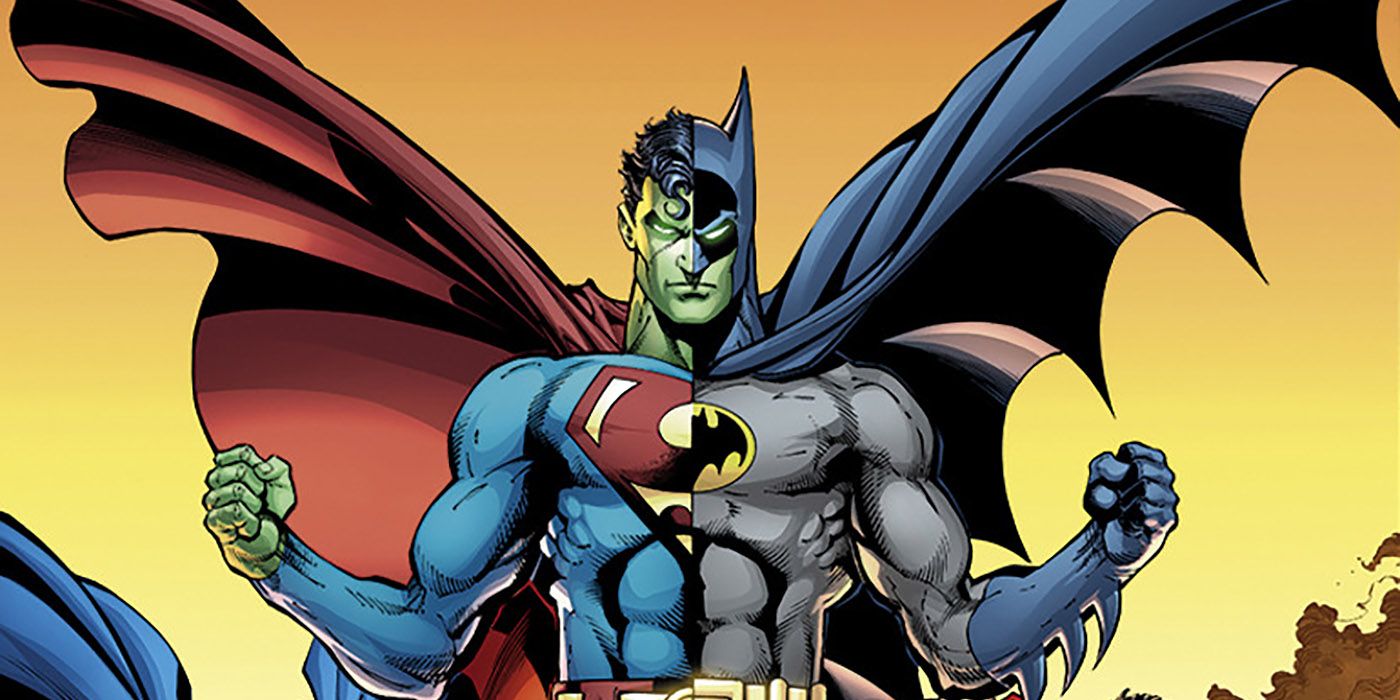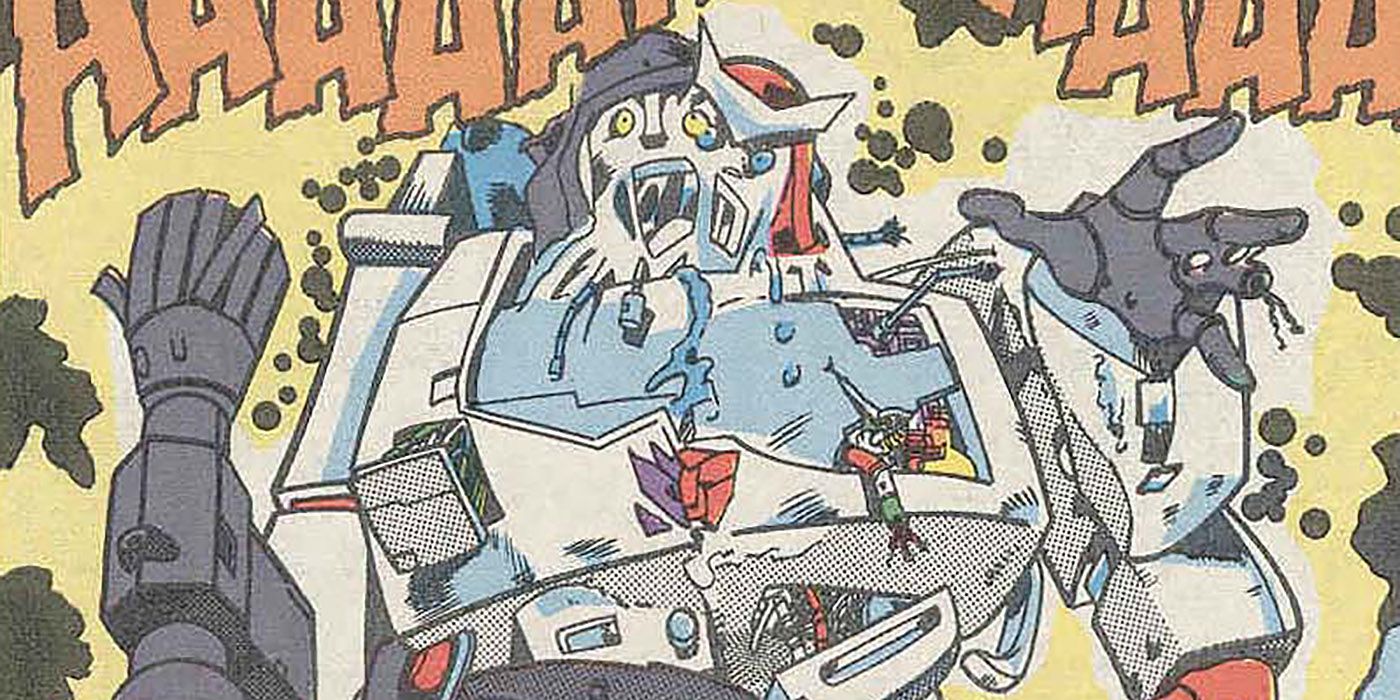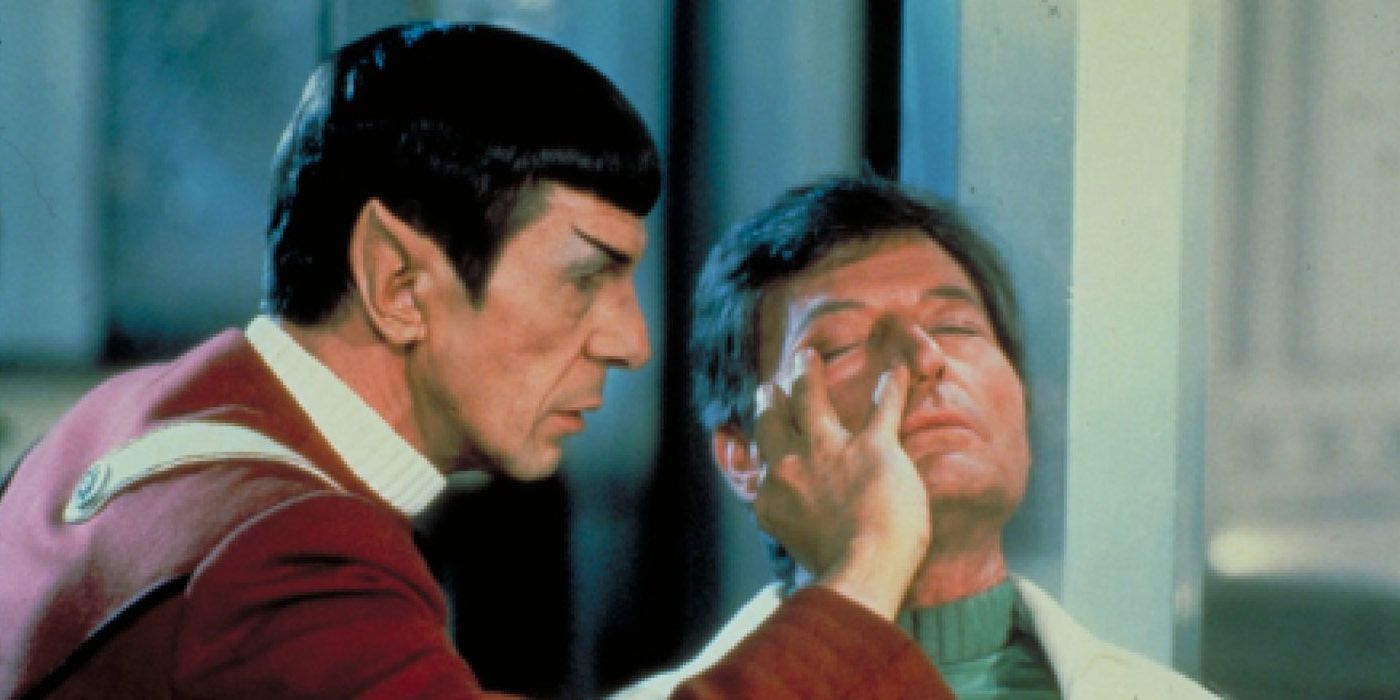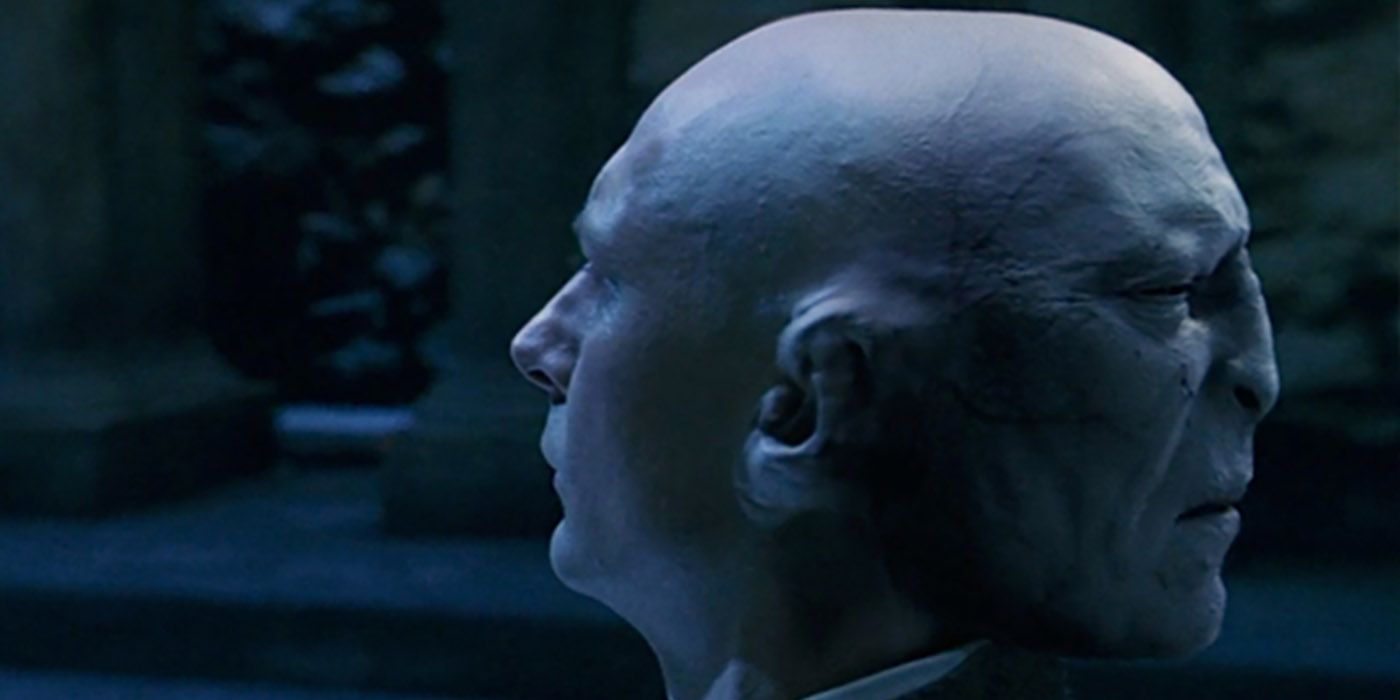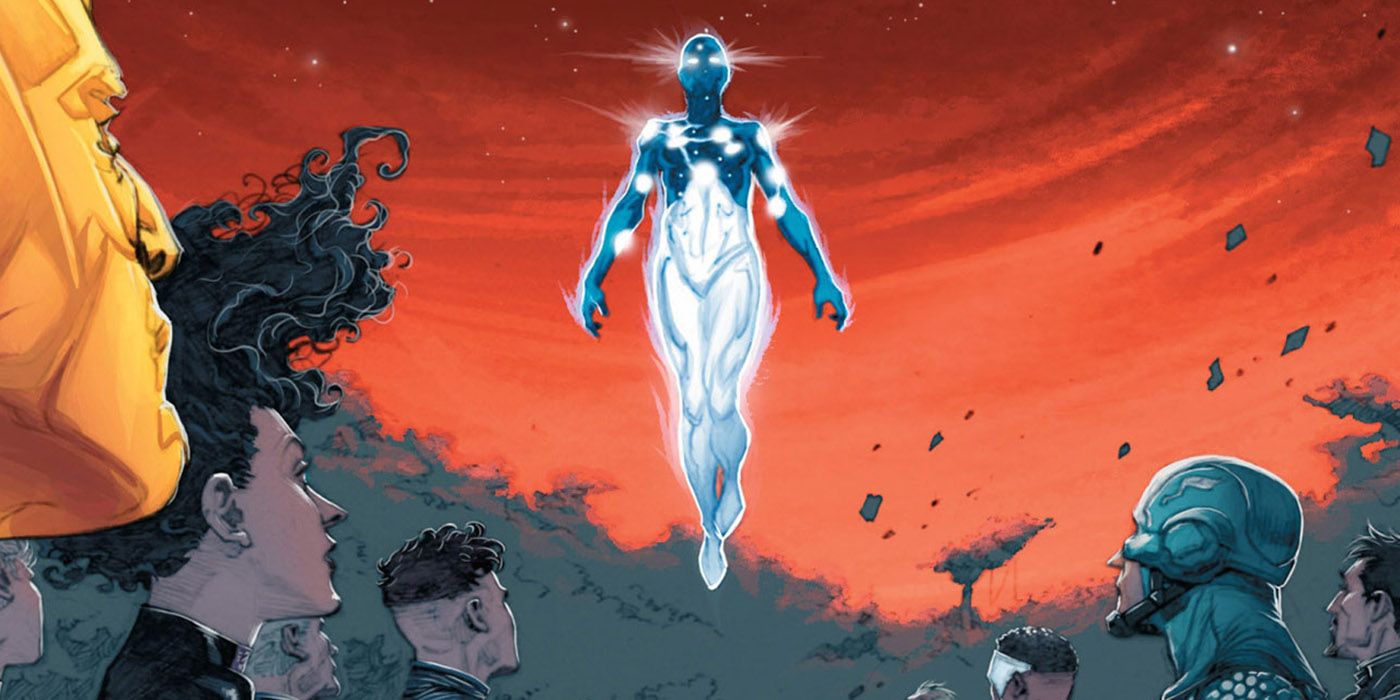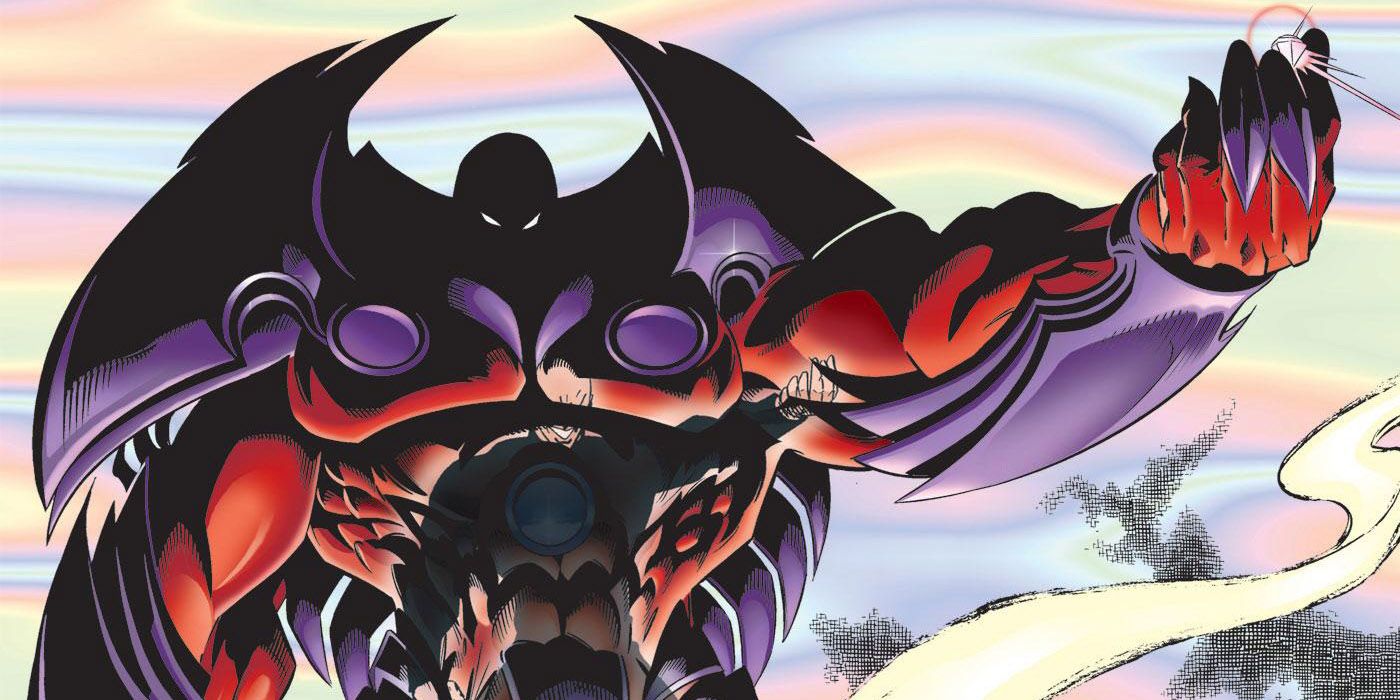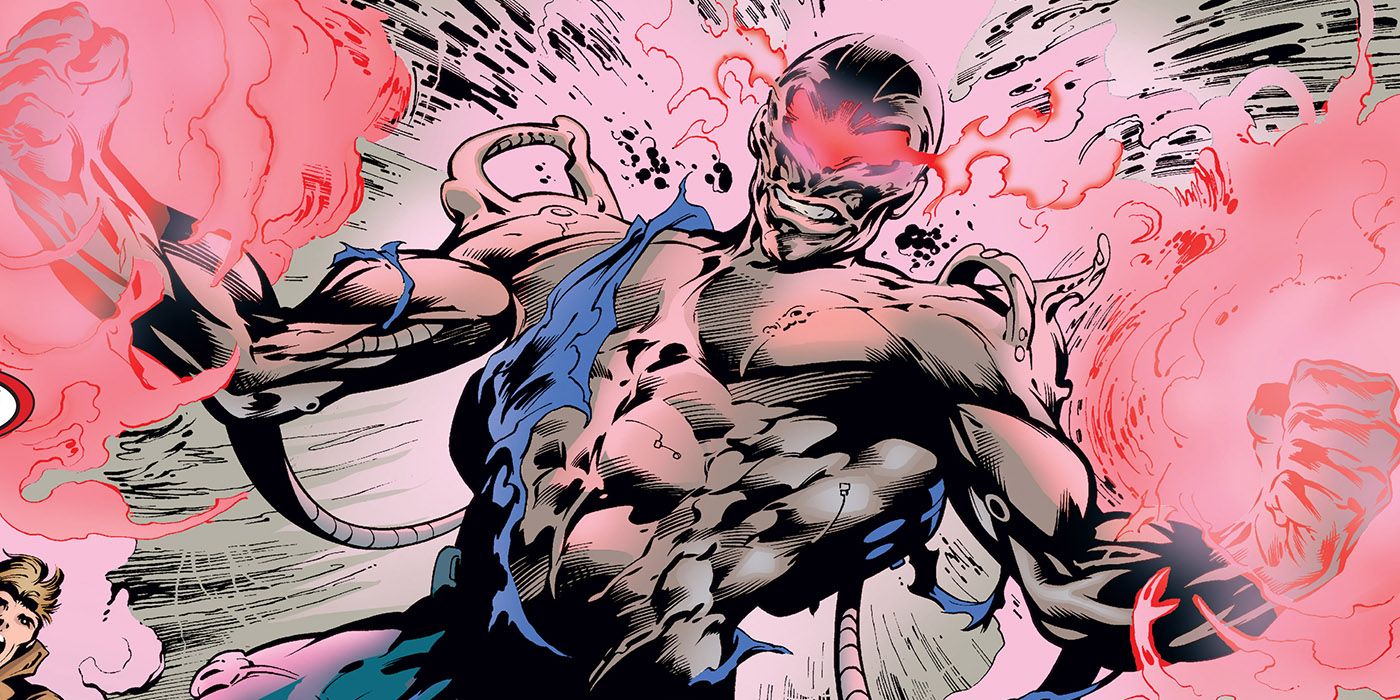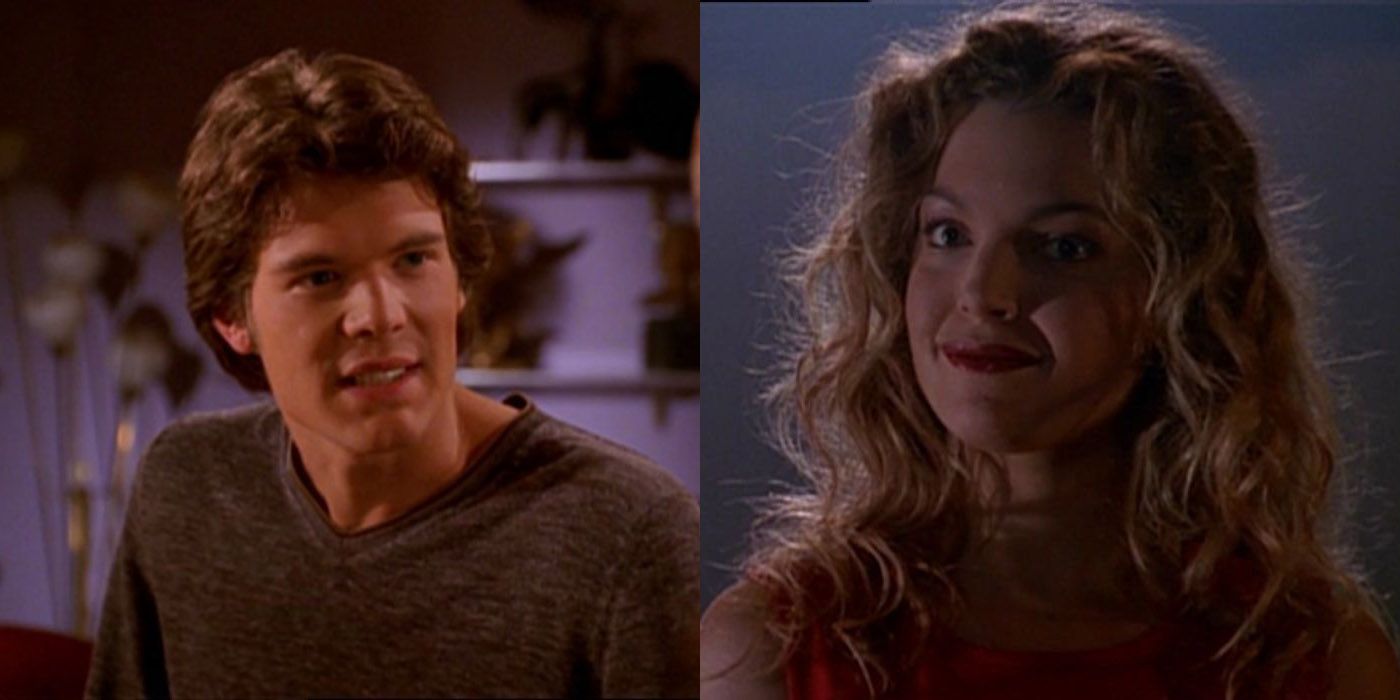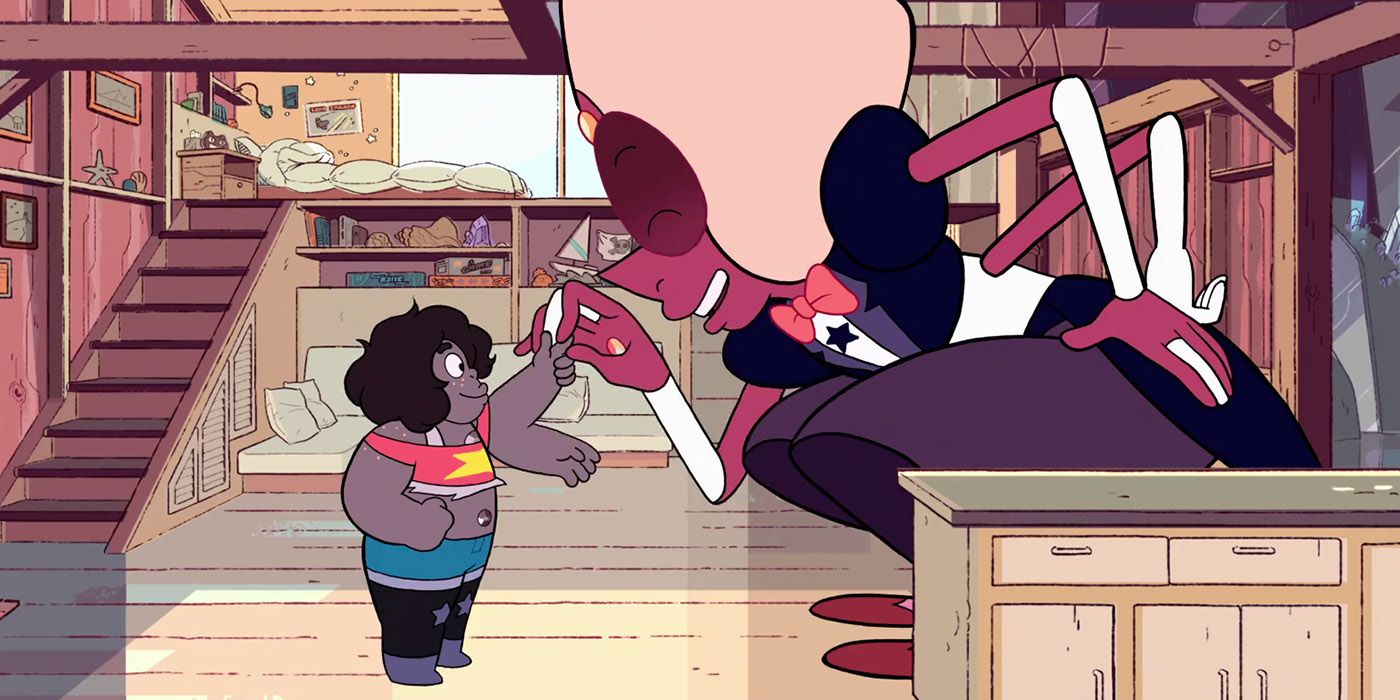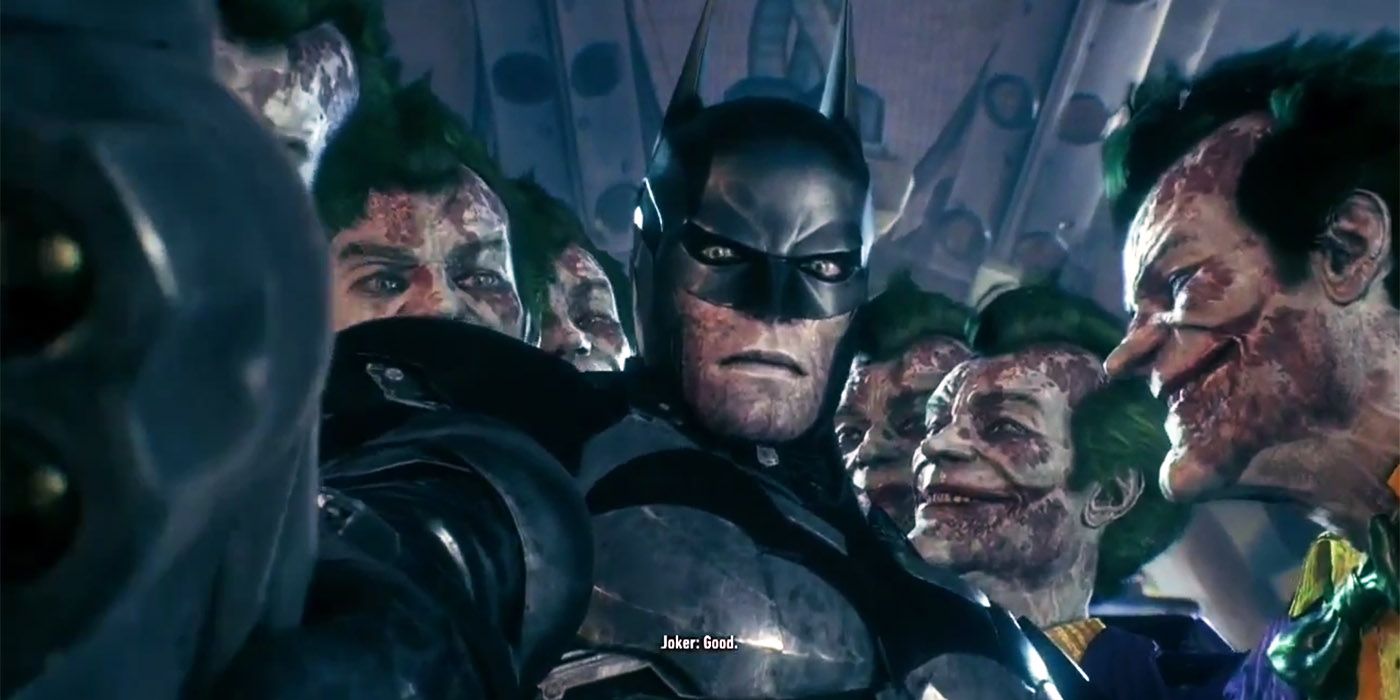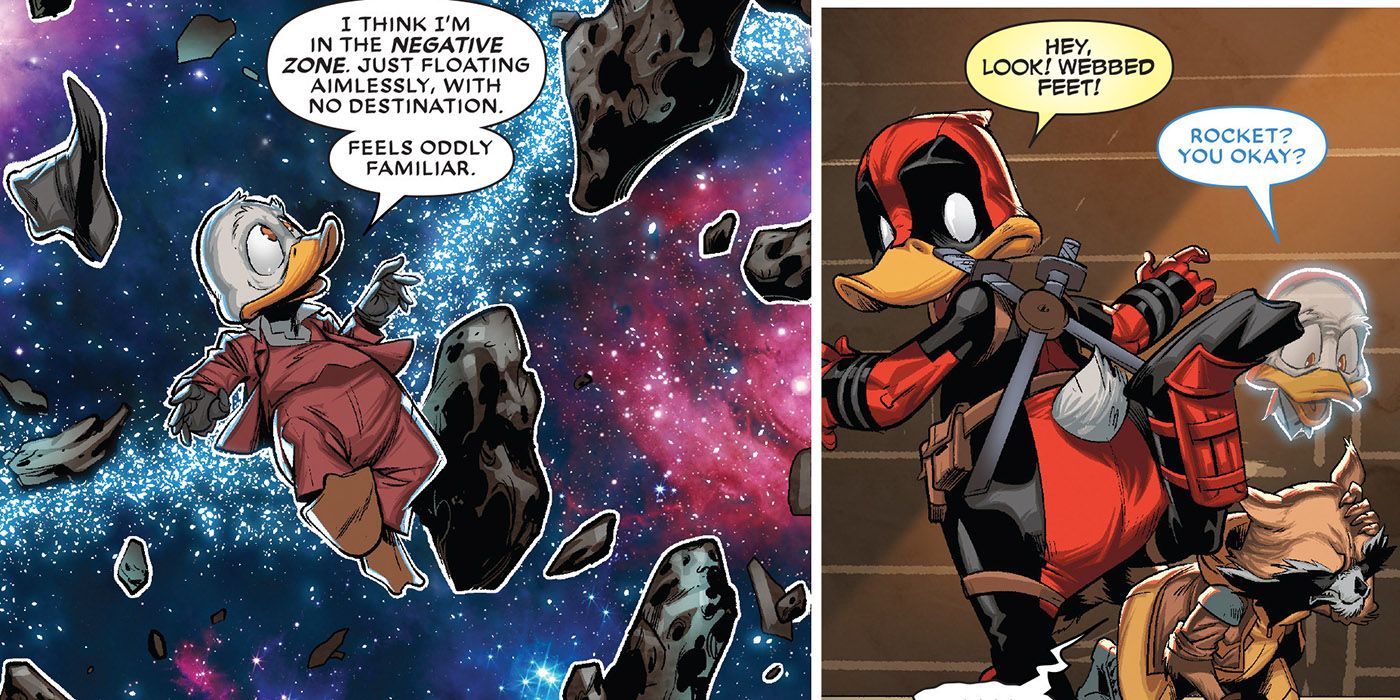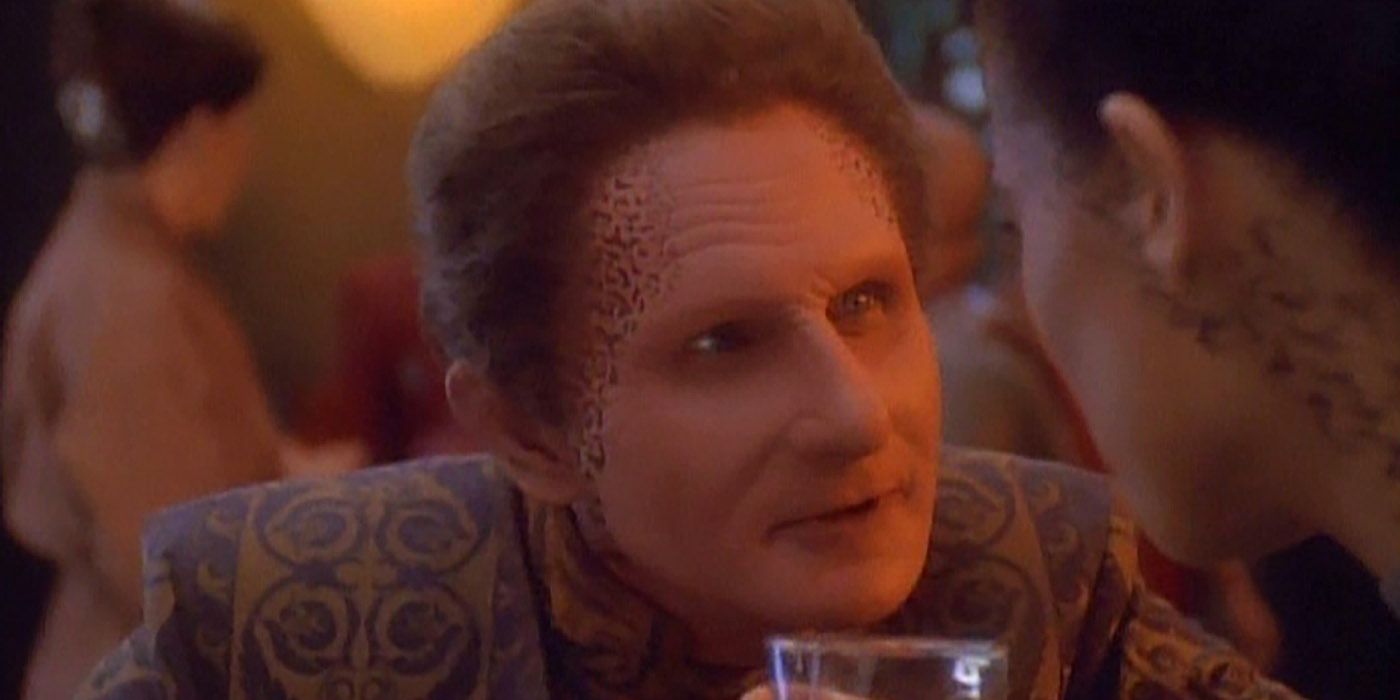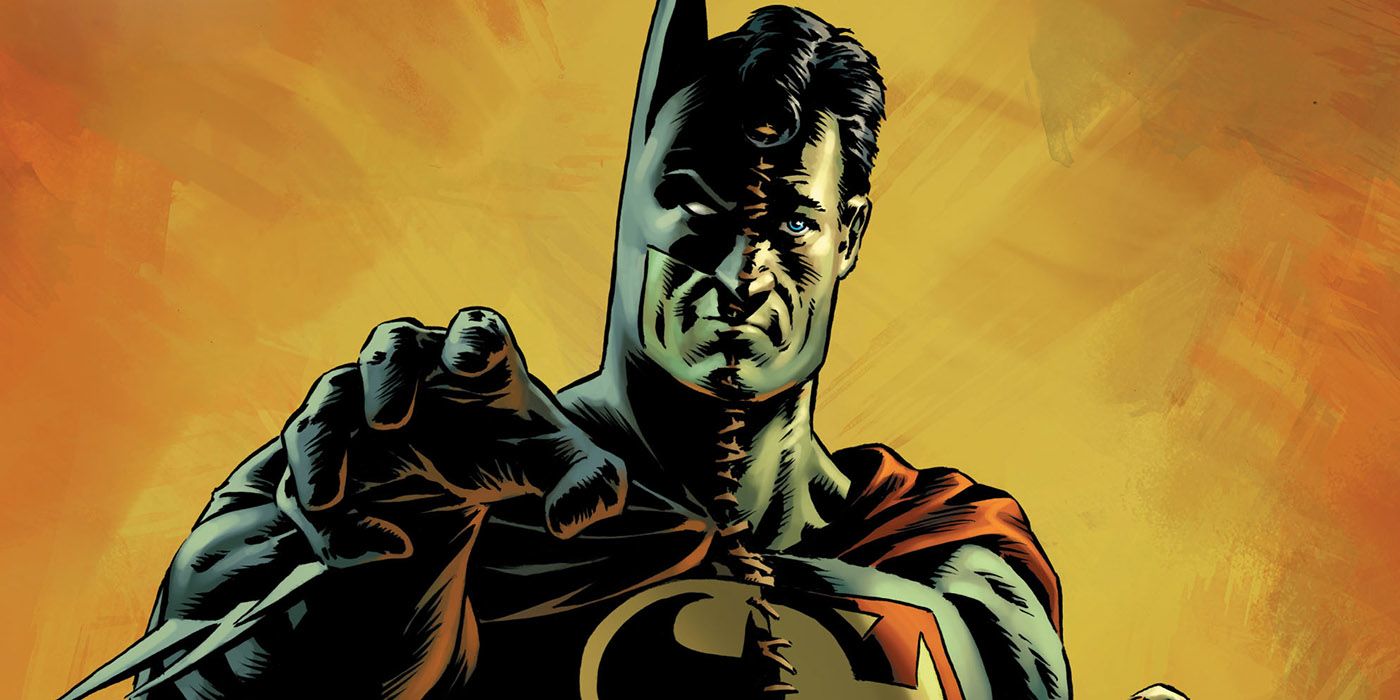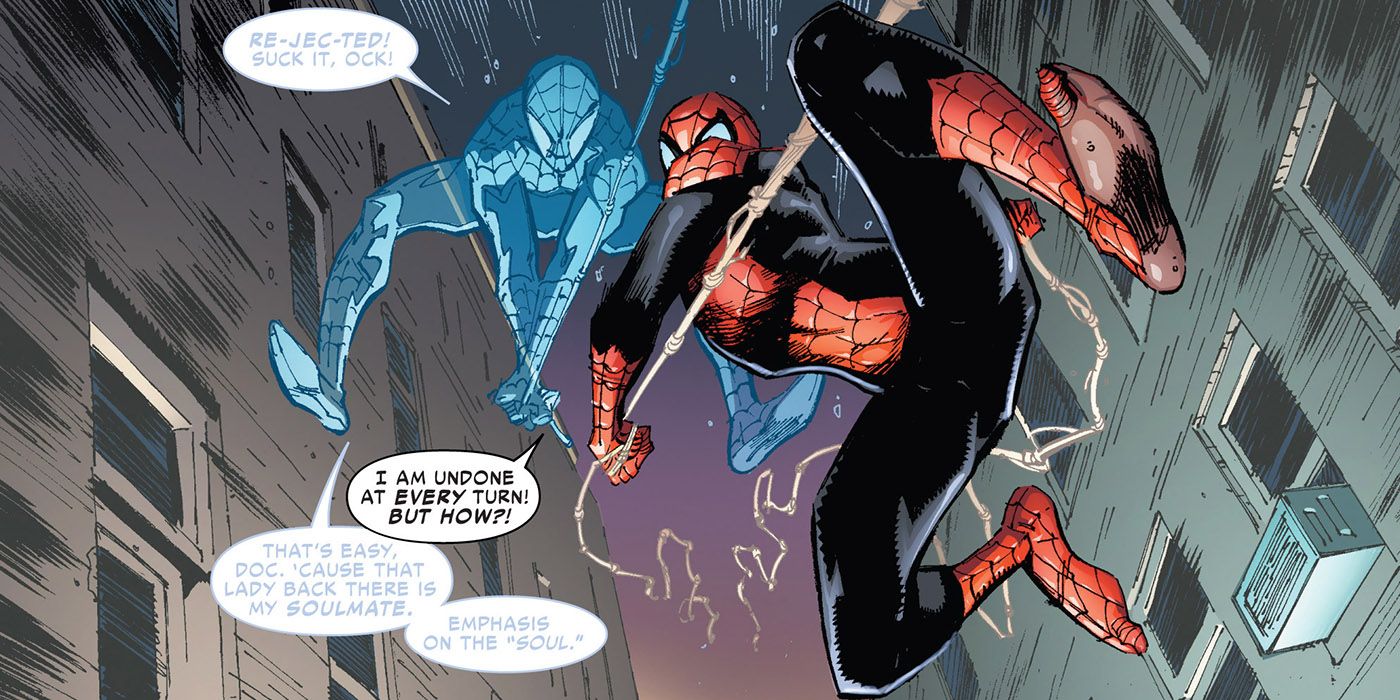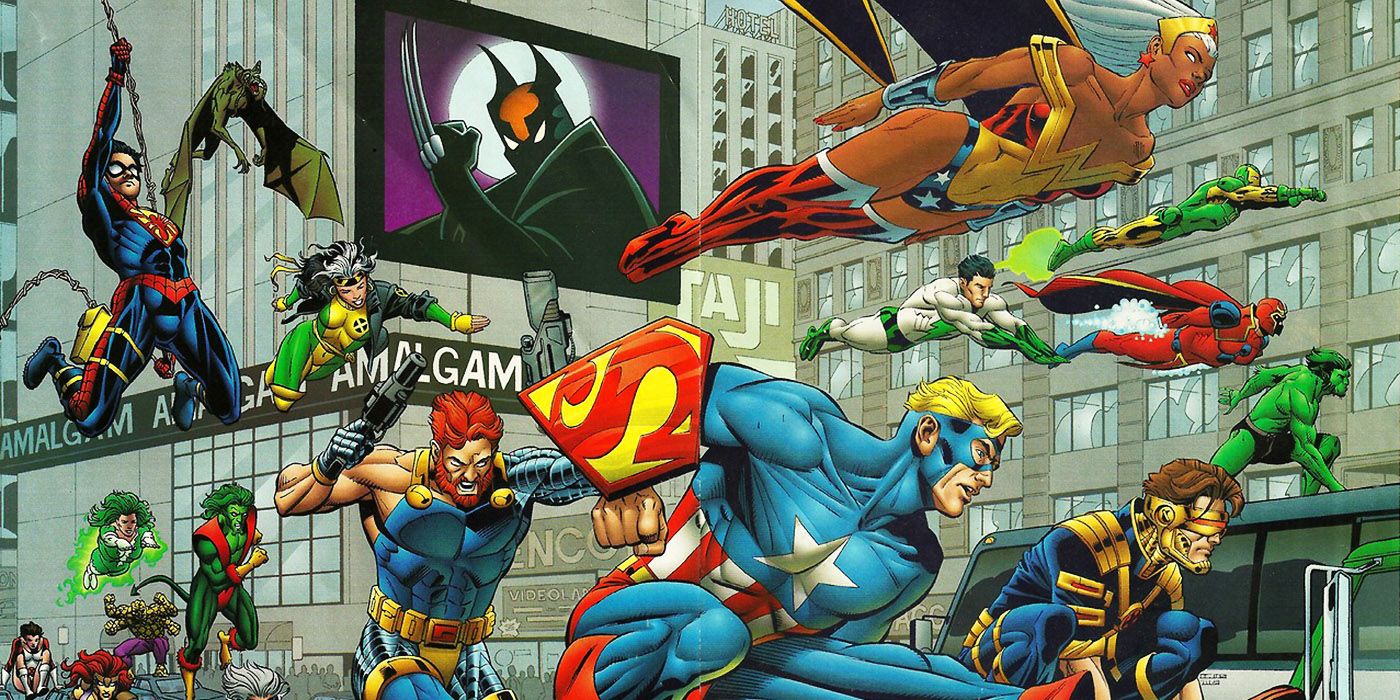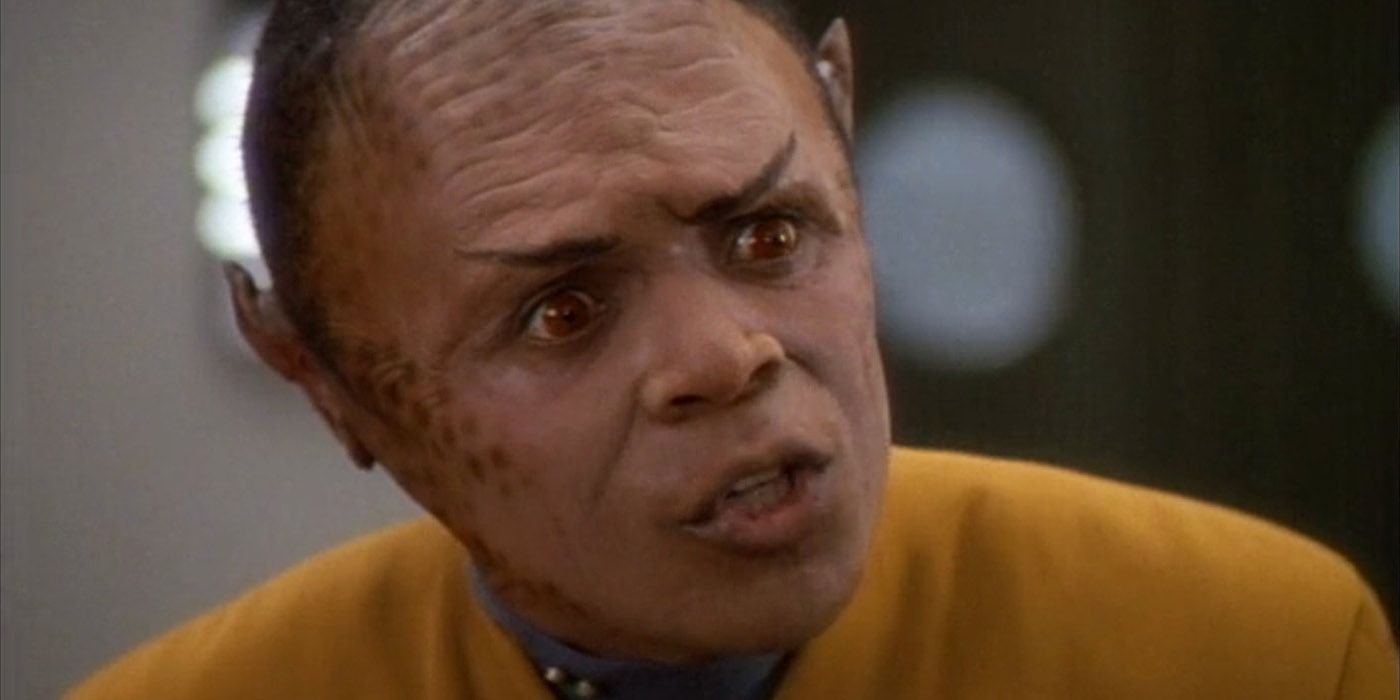What if two unique characters fused together to become a hybrid? It's an irresistible concept, which is probably why TV shows, movies, and comic books keep coming back to it.
Don't kid yourself, though. Where writing, acting, and directing are concerned, it's one of the hardest tricks in the book. Pulling off a believably perfect fusion of two (or more) characters is all but impossible. It requires a deep understanding of both individuals, their emotions, and their motivations, and how all of those complex ideas might intermingle and combine. Some stories have managed to pull it off better than others, but rarely have we seen a perfect blending of two distinct characters.
Here are 15 times that stories dared to try the impossible. The following are a handful of instances where two or more characters merged and the people telling such a difficult story nailed it, or came mighty close.
15) Megatron & Ratchet
That right there is the stuff nightmares are made of.
The year was 1990 — back when Marvel published Transformers comics. The Autobots were on one of their many jaunts across the cosmos aboard an Ark, when they came under attack by those dastardly Decepticons. A nasty named Blackjack armed a whole mess of explosives aboard the ship and set off a countdown to destruction. The Autobots had wounded in sickbay and refused to leave them behind, so another solution was devised.
Ratchet created a wormhole back to Megatron's base on Cybertron and sent the explosives there. He saved the Ark, but wound up traveling with the explosives, seemingly ending his own life and that of Megatron.
Some time later, a hideous creature appeared on the Ark, an unholy hybrid of Ratchet and Megatron. It wasn't so much a blend of their personalities as a monster that happened to be made from their bodies. Neither was in full control, and both appeared to be suffering. This led to a surprisingly smart debate among the Autobots. Some argued that they had to separate the two Transformers to save Ratchet's life; others pointed out that restoring them would mean restoring Megatron. In the end, Optimus Prime couldn't bring himself to kill his friend, and the two were separated.
14) Spock & Bones
Spock was dead, his body shot to the newly-formed planet Genesis. Dr. Leonard "Bones" McCoy was seemingly going mad. Captain James T. Kirk was uncertain what to do in Star Trek III: The Search for Spock — until Spock's dad Sarek explained the situation.
Before his death, Spock had bonded his katra — essentially his soul — to McCoy's body, back in Star Trek II: The Wrath of Khan. The result was a Bones who would occasionally slip into a Spock-fueled reverie, spouting the Vulcan's words in a voice eerily similar to Spock's own.
With Spock's body being regenerated by the Genesis planet's unique properties, an extraordinary possibility presented itself: if Spock's friends could retrieve his body and keep Bones alive long enough (the katra mind-meld thing was potentially fatal for the doctor if left intact for too long), they could take both of them to Vulcan and have Spock's mind restored to its rightful home. It was a perilous journey, but this being Star Trek, it all worked out in the end.
13) Voldemort & Quirrell
Talk about nightmare fuel. By the time we met Professor Quirrell in Harry Potter and the Sorcerer's Stone, he was already merged with Lord Voldemort, the most dangerous dark wizard of all time.
If you're one of the three people on planet Earth who don't know the story, in a nutshell it goes like this. Voldemort attempted to kill Harry Potter as a baby because of a prophecy that Harry would one day destroy him. But Harry's mom protected him with her life, rebounding the killing curse back onto Voldemort, who lost his physical body and became this kind of wandering wraith.
Sometime later, Quirrell found the dark lord he was secretly loyal to and offered himself as a vessel to carry Voldemort until he could reconstitute his own body. The subsequent magical merger resulted in Quirrell (rather disgustingly) having two faces — Voldemort's was now on the back of Quirrell's bald head. The two individuals were never truly blended, however, as each retained his own distinct identity. They even had to speak to each other audibly to coordinate their efforts.
12) Captain Universe
The entire concept of Captain Universe is based on the merging of two beings. That's because "Captain Universe" isn't a name, it's a title passed frequently from one person to another. And it comes with near-limitless power.
Depending on who you ask, Captain Universe's power source could be any number of things. It's officially called the Uni-Power, but it's been known as everything from the Avenging Angel to a form of sentient energy, as well as the Guardian of Eternity and a personification of the Universe itself.
Marvel claims that the Uni-Power has bonded with hundreds of beings, though we've only seen a dozen or so of them. They include: Silver Surfer, Susan Storm, Spider-Man, Hulk, Deadpool, Doctor Strange, Daredevil, X-23, Shi'ar Imperial Guard commander Gladiator, the X-Men villain Juggernaut, and more.
Clearly, Marvel writers have a lot of fun dreaming up who will be the most interesting and surprising wielders of Captain Universe's power. It has also merged with several non-powered humans, and once it even joined with a toddler. Another time, it fused with a dog!
11) Onslaught
During a battle back in the late '90s, Magneto violently ripped all of the Adamantium off of Wolverine's bones. Appalled by his frenemy's savagery, Professor X reached into Magneto's mind and shut it down. If only it had ended there, things might have turned out okay.
But this is comics, so dream on. Instead, the psychic connection between these two powerful mutants caused the darkest impulses of both to merge, creating a second personality in Xavier (proving that David Haller is his father's son) that even he was unaware of. That personality dubbed itself Onslaught, and eventually rose to the surface.
Onslaught was basically Xavier and Magneto soldered together by pure evil. He had every mind-based power you can think of, along with magnetic manipulation on a massive scale. Eventually, he sought out and absorbed two other excessively powerful beings, Nate Grey and Franklin Richards, giving him even greater power — enough to alter reality. Oh, and he was really big.
The red-and-purple guy was eventually defeated by the combined efforts of the X-Men, the Avengers, and the Fantastic Four, leading to the death and rebirth of several of them. But that's another story.
10) Cyclops & Apocalypse
In the pages of X-Men and Uncanny X-Men, the Children of the Atom were facing down the terrible might of Apocalypse for like the ninetieth time. There was a thing about twelve mutants the villain had gathered, who he attempted to drain the powers of to use for his own purposes.
Apocalypse' plan didn't work out so well, but he still managed to take down most of those twelve mutants. When he attempted to make Nate Grey his next human host, Cyclops sacrificed himself, merging with Apocalypse instead. As this new hybrid entity, Cyke and Apocalypse never really did anything all that evil, spending most of their time struggling for control over the other. (Marvel missed an opportunity by not referring to them as Apocalops.)
Later, he was found in Egypt, trying to separate himself from Apocalypse. Scott's wife Jean Grey broke them apart, but the damage was done. Cyclops' personality subsequently changed to a darker, more serious tone. It could be argued that this was the beginning of the end for Cyclops, as his downhill slide into extremism can be traced to this merger.
9) Ben & Glory
Once upon a time on Buffy the Vampire Slayer, there was a demigod named Glorificus. She ruled over a hellish dimension with two other demigods, but her strength and viciousness grew to eclipse that of her cohorts. So they banished her to Earth, where her essence was bound to an ordinary human boy.
That boy was Ben, who grew up thinking of Glory as his sister. Literally sharing the exact same body, they would trade-off time as one or the other, switching in an instant and often at random, though the change could sometimes be triggered. Glory's power was greatly diminished on Earth, not allowing her to maintain control over Ben all the time. So Ben was able to grow up, go to school, and eventually become a nurse.
As Glory's evil plan to return to her own dimension came to fruition, she started gaining more control over Ben, but also found her own emotions and reactions influenced by his human compassion and empathy. Buffy's mentor Giles ended both their lives by killing Ben at his weakest moment.
8) Steven Universe
A core component of Cartoon Network series Steven Universe — a character drama masquerading as children's entertainment — is the ability of its superhuman characters to experience "Fusion." The Crystal Gems, ancient heroes and villains who fight over the fate of Earth, have the ability to merge their powers and physical bodies to one another to form more powerful beings. And the mythology and rules behind Fusion, maintaining a Fusion or losing it, have a surprising amount of complexity.
Fusion can't happen between just any two Crystal Gems; they have to be compatible in an emotional way. Fusion typically happens after the participating Gems perform a synchronized routine called a "Gem Dance." Some Fusions are more successful than others, such as one instance when characters Rose and Pearl fused to become Rainbow Quartz.
The thing about Fusion is that it isn't a melding or mingling of the two or more individuals involved. It's not a matter of their powers and personalities blending together to become one. Instead, the fused Gems become a brand new entity. That being may have some physical properties of the individuals, but the Fusion process alters them into something new and altogether different.
7) Batman & Joker
In Rocksteady's magnum opus Batman: Arkham Knight, Batman finds himself battling a deadly virus of Joker's infected blood. Five civilians were exposed to the toxic blood, and have begun taking on aspects of Joker's personality, behaving like him in erratic, unpredictably dangerous ways.
Batman himself is revealed to be the final contaminated individual, but Bruce Wayne's will is so strong that he's able to fight off the effects for much longer than the others. Until Scarecrow hits him with a new, more potent version of his fear toxin that is, which causes Bats to experience hallucinations of Joker and eventually, for Joker's personality to begin surfacing and taking control.
The hallucinated Joker gains full access to Batman's memories, finally discovering his true identity and offering twisted insights into Bruce's psyche. One extended sequence in the game has Joker fully taking over Batman's body and wreaking havoc on Gotham's underworld. Batman has to wrest control of himself back from the Joker's influence, but for a short period of time, they become a blended entity. And it's every bit as disturbing as it sounds.
6) Deadpool the Duck
What do you get when you combine Deadpool, Howard the Duck, and a teleportation device bitten by an alien with "space rabies"? The most ridiculous superhero merger ever.
After the aforementioned accident, Deadpool the Duck was born. This particular character combo was even odder than you're imagining. In the pages of the limited series Deadpool the Duck, things got divvied out this way: Deadpool's body vanished while he gained full control of Howard's, which was now wearing 'Pool's costume. But Howard was still in the mix, his true self seemingly floating "in the Negative Zone," while he was able to interact with Deadpool via his floating head, which only Deadpool could see. Got that?
Among the unfortunate side effects were Deadduck Duckpool vomiting every five minutes. Also, Deadpool kept referring to Howard as "Spirit Animal," much to Howard's annoyance. Not to worry, though; Deadpool (in Howard's body) never lost his ability to break the fourth wall.
5) Odo & Curzon Dax
By its third season, Star Trek: Deep Space Nine had hit its stride, a trend that amped up with "Facets," a Jadzia Dax-focused episode. In it, Jadzia engaged in a Trill rite-of-passage in which her closest friends agreed to host the personalities of the Trill the Dax symbiote had been joined with in the past.
The most compelling of these borrowed personalities was Captain Sisko's former mentor, Curzon Dax, who was hosted by Odo. Or at least that was the plan. Instead of a simple body-swap, Odo's shape-shifting physiology caused him to blend with Curzon's personality, creating a combo entity that shared their characteristics. And both Curzon and Odo liked the experience so much, they didn't want to be separated, proposing that they remain this way forever.
During their joining, Odo/Curzon indulge in some of Curzon's favorite hobbies, like gambling and drinking, and Curzon later gets to experience the thrill of Odo's shape-shifting abilities. But it's short-lived, as Jadzia asserts herself and convinces Curzon it's time for things to go back to normal.
4) Composite Superman
It began with a couple of adventures where Superman seemed to interfere in a battle between Batman and two of his enemies, and then Batman did the same during Superman's battle against an ultra-powerful big bad. Following a little detective work, the two "world's finest" superheroes figured out that they had a joint impersonator.
Superman/Batman Annual #3 depicts a nontraditional merging, in that the characters that joined together were clones of the originals. Still, they possessed all of the real superheroes' traits, so it's pretty legit. A baddie named Professor Ivo conducted some mad science experiments to clone the entire Justice League, but it went sideways, and eventually, the clones all merged into a single creature.
While it had all the powers of the Justice League, this Composite Superman fixated on Superman and Batman for its appearance, combining the costumes and powers of both in a twisted attempt to be them. It even abducted Lois Lane and Tim Drake to try and live Supes' and Bats' secret identity lives, too. Our heroes eventually defeated him using the old "confuse him and force him to short circuit" bit. If by "short circuit" you mean literally rip yourself in half in the most disgusting way possible, of course.
3) Superior Spider-Man
In 2013, Doc Ock was dying. So he created an invention that enabled him to swap bodies with Peter Parker. Octavius was now in Spider-Man's body, while Peter was in the frail and dying body of Doc Ock. It was a diabolical plan that Peter tried his best to undo, but ultimately failed.
What Peter did do was give Octavius all of his memories and morals, leaving Otto a changed man. Ock retained his own brilliance and ambition, but vowed to be a superior Spider-Man carrying on in Peter's name. There was a twist, though: despite his apparent death, Peter Parker was never truly out of the picture. His spirit was still bound to his body, even if he wasn't in control of it, and he spent the next few years watching Otto's activities, subtly influencing him, and trying to get his body back.
Otto did well at the start, boosting Peter's profile by starting Parker Industries and finding true love. But across 36 issues, his morals slipped, along with his ability to maintain Peter's relationships and memories. Eventually, he voluntarily gave Peter his body back, acknowledging that Parker was the better Spider-Man.
2) Amalgam Comics
Believe it or not, there was a time when Marvel and DC played nice. In 1996, the two teamed up for a crossover miniseries called DC vs. Marvel, which they co-published. In the first half of the series, events transpired that caused the two universes to merge, giving way to a new, shared imprint called Amalgam Comics.
The merging of the universes caused everything from past events like Crisis on Infinite Earths and Secret Wars to meld together, as well as cities and major locations around this new Earth. Most intriguing, however, were the combinations of heroes. DC's Superman and Marvel's Captain America became Super-Soldier. Batman and Wolverine became Dark Claw.
For the most part, the publishers paired up heroes with their obvious counterparts: Green Arrow & Hawkeye, Aquaman & Namor, Hawkman & Angel, Solomon Grundy & Hulk. There was even a cute nod to the companies' rivalry by combining the two Captain Marvels. But other combos were more surprising and far more fascinating, such as Speed Demon, a combo of Flash and Ghost Rider. Or Jono Hex, an amalgam of Jonah Hex and the X-Men's Chamber.
This is a universe ripe for revisiting or reinventing, if only Marvel and DC could get along. (Don't hold your breath.)
1) Tuvok & Neelix
One of the strangest concepts on a show that regularly examined bizarre concepts, aka Star Trek: Voyager, was what would happen if two unlikely characters were merged into a single entity. Ultra-zen Vulcan security chief Tuvok and plucky Delta Quadrant native-turned-chef Neelix were combined via a transporter accident into a perfectly blended hybrid who came to be known as Tuvix — an individual who frankly was far more interesting than the two bland characters he was made from. Tuvix was quickly accepted and loved by the crew as a unique individual, mostly thanks to his subtle mixture of serious and jovial, which guest actor Tom Wright pulled off brilliantly.
Though much of Voyager's run was plagued by mediocrity, "Tuvix" remains one of its most compelling hours. Instead of playing it for laughs, the show used this scenario to question the value of two lives over one. And if you're thinking it was a matter of simple math, you haven't seen the episode. There were no easy answers, or as Janeway put it, "At what point did [Tuvix] become an individual, and not a transporter accident?"
Tuvix argued vehemently that he had the right to exist and didn't want to die; Janeway couldn't ignore the fact that two other members of her crew no longer existed so that he could live. In the end, it's not hard to imagine what happened to Tuvix — this is Star Trek, eternal lover of the reset button — but rarely was Voyager more heartbreaking.
--
What other character mergers out there stand out in your mind? Do you think Marvel and DC should come together for more Amalgam adventures? Sound off in the comments.

